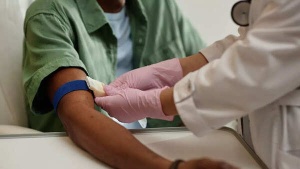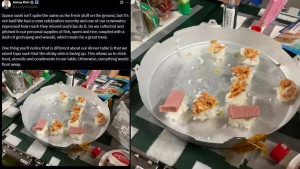Think glass is safer than plastic? It might contain more cancer-linked microplastics; study says
A recent study conducted by France’s food safety agency, ANSES, has challenged the widespread belief that glass bottles are a safer option for beverage packaging. The research reveals that glass bottles may contain significantly higher levels of microplastics compared to plastic bottles and cans.
The study found that glass bottles containing soft drinks, lemonade, iced tea, and beer had an average of 100 microplastic particles per litre, which is up to 50 times more than what was found in plastic bottles or metal cans. This discovery contradicts the initial assumption that plastic bottles would be the primary source of microplastic contamination.
The study indicates that the microplastics primarily originate from the paint coating on the metal caps used to seal the glass bottles. This highlights a previously underestimated contamination pathway that occurs during the bottling and storage processes, raising concerns about potential implications for consumer health and packaging standards.
Unexpected High Levels of Microplastics in Glass Bottles
The ANSES study scrutinized a range of popular beverages, including soda, beer, lemonade, iced tea, water, and wine, packaged in various materials across France. The findings indicated that glass bottles contained approximately 100 microplastic particles per litre, while plastic bottles and cans exhibited levels five to fifty times lower. Among the tested beverages, beer bottles recorded some of the highest microplastic concentrations, averaging around 60 particles per litre. Water showed the lowest levels, with 1.6 to 4.5 particles per litre, depending on the container, and wine contained minimal microplastics, even when stored in glass bottles with caps.
What is the Source of Plastic in Glass Bottles?
Detailed analysis revealed that the microplastics present in glass-bottled drinks matched the shape, color, and polymer composition of the paint utilized on the metal caps. The friction and rubbing that occur during storage and transport cause microscopic scratches on the caps, leading to the shedding of tiny plastic particles into the beverages. These particles are invisible to the naked eye and contaminate the drinks during bottling and storage. Testing showed that cleaning the caps or improving storage conditions could potentially reduce microplastic contamination, which may offer potential mitigation strategies for manufacturers.

Implications and Future Directions
While the study demonstrates higher microplastic contamination in glass bottles due to cap paint, the associated health risks remain uncertain due to limited toxicological reference data. The findings challenge the common belief that glass packaging is inherently safer than plastic. Researchers recommend further investigation into the health impacts of microplastics and urge improvements in packaging materials and storage practices to minimize contamination. This study prompts regulatory bodies and manufacturers to reconsider the design and materials used in beverage packaging to ensure consumer safety.
Newer articles
Older articles
-
 5 smart tricks to instantly influence anyone (without being pushy), as per psychology
5 smart tricks to instantly influence anyone (without being pushy), as per psychology
-
 This new AI tool can help you book train tickets, get refunds and check details on IRCTC website and app
This new AI tool can help you book train tickets, get refunds and check details on IRCTC website and app
-
 Cancer could be detected 3 years before symptoms appear with a simple blood test; new study reveals
Cancer could be detected 3 years before symptoms appear with a simple blood test; new study reveals
-
 ESA reveals the first stunning images of an artificial solar eclipse created by Proba-3 satellites
ESA reveals the first stunning images of an artificial solar eclipse created by Proba-3 satellites
-
 Chess: 'My wife is way more attracted to me now' — Magnus Carlsen after record rating in freestyle
Chess: 'My wife is way more attracted to me now' — Magnus Carlsen after record rating in freestyle
-
 Don't worry about the outside world: Tendulkar's advice to Gill
Don't worry about the outside world: Tendulkar's advice to Gill
-
 NASA astronauts prepare ‘space sushi’ aboard the ISS in zero gravity during a heartwarming crew celebration
NASA astronauts prepare ‘space sushi’ aboard the ISS in zero gravity during a heartwarming crew celebration
-
 Amitabh Bachchan calls working with son Abhishek Bachchan his 'greatest blessing'
Amitabh Bachchan calls working with son Abhishek Bachchan his 'greatest blessing'
-
 Tait rues new-ball miss as Nissanka punishes Bangladesh
Tait rues new-ball miss as Nissanka punishes Bangladesh
-
 Twitter bans over 5 lakh accounts in India, here's why
Twitter bans over 5 lakh accounts in India, here's why